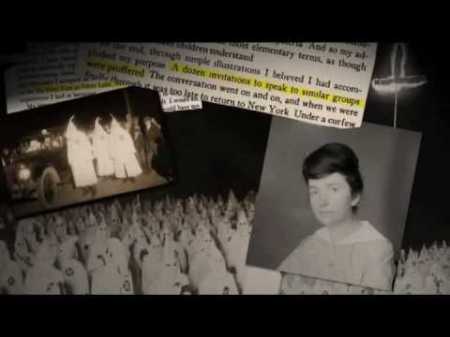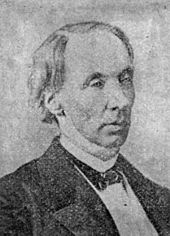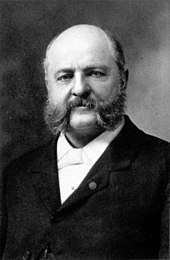no, i am not.... she did not believe in killing the undesirables, as many academics and the States did...you would think they would in the least get sanger's quote correct???
Knowledge of birth control is essentially moral. Its general, though prudent, practice must lead to a higher individuality and ultimately to a cleaner race.
Eu-genetics was a huge movement in the USA long long before Sanger... It was the way society thought in her day, but note, she did not believe in the way most of eugenetic supporters in the day believed....she believed it was the individual's decision to make and not the government's. It's just unbelievable how this was all A-OK with even Christian groups!!!!!
FYI
Eugenics in the United States - Wikipedia, the free encyclopedia
Eugenics was widely accepted in the U.S. academic community.[7] By 1928 there were 376 separate university courses in some of the United States' leading schools, enrolling more than 20,000 students, which included eugenics in the curriculum.[16] It did, however, have scientific detractors (notably, Thomas Hunt Morgan, one of the few Mendelians to explicitly criticize eugenics), though most of these focused more on what they considered the crude methodology of eugenicists, and the characterization of almost every human characteristic as being hereditary, rather than the idea of eugenics itself.[17]
By 1910, there was a large and dynamic network of scientists, reformers and professionals engaged in national eugenics projects and actively promoting eugenic legislation. The American Breeder's Association was the first eugenic body in the U.S., established in 1906 under the direction of biologist Charles B. Davenport. The ABA was formed specifically to "investigate and report on heredity in the human race, and emphasize the value of superior blood and the menace to society of inferior blood." Membership included Alexander Graham Bell, Stanford president David Starr Jordan and Luther Burbank.[18][19] The American Association for the Study and Prevention of Infant Mortality was one of the first organizations to begin investigating infant mortality rates in terms of eugenics.[20] They promoted government intervention in attempts to promote the health of future citizens.[21][verification needed]
Several feminist reformers advocated an agenda of eugenic legal reform. The National Federation of Women's Clubs, the Woman's Christian Temperance Union, and the National League of Women Voters were among the variety of state and local feminist organization that at some point lobbied for eugenic reforms.[22]
One of the most prominent feminists to champion the eugenic agenda was Margaret Sanger, the leader of the American birth control movement. Margaret Sanger saw birth control as a means to prevent unwanted children from being born into a disadvantaged life, and incorporated the language of eugenics to advance the movement.[23][24] Sanger also sought to discourage the reproduction of persons who, it was believed, would pass on mental disease or serious physical defect. She advocated sterilization in cases where the subject was unable to use birth control.[23] Unlike other eugenicists, she rejected euthanasia.[25] For Sanger, it was individual women and not the state who should determine whether or not to have a child.[26][27]
In the Deep South, women's associations played an important role in rallying support for eugenic legal reform. Eugenicists recognized the political and social influence of southern clubwomen in their communities, and used them to help implement eugenics across the region.[28] Between 1915 and 1920, federated women's clubs in every state of the Deep South had a critical role in establishing public eugenic institutions that were segregated by sex.[29] For example, the Legislative Committee of the Florida State Federation of Women's Clubs successfully lobbied to institute a eugenic institution for the mentally retarded that was segregated by sex.[30] Their aim was to separate mentally retarded men and women to prevent them from breeding more "feebleminded" individuals.
Public acceptance in the U.S. was the reason eugenic legislation was passed. Almost 19 million people attended the Panama–Pacific International Exposition in San Francisco, open for 10 months from February 20 to December 4, 1915.[31][32] The PPIE was a fair devoted to extolling the virtues of a rapidly progressing nation, featuring new developments in science, agriculture, manufacturing and technology. A subject that received a large amount of time and space was that of the developments concerning health and disease, particularly the areas of tropical medicine and race betterment (tropical medicine being the combined study of bacteriology, parasitology and entomology while racial betterment being the promotion of eugenic studies). Having these areas so closely intertwined, it seemed that they were both categorized in the main theme of the fair, the advancement of civilization. Thus in the public eye, the seemingly contradictory[clarification needed] areas of study were both represented under progressive banners of improvement and were made to seem like plausible courses of action to better American society.[33][verification needed]
Beginning with Connecticut in 1896, many states enacted marriage laws with eugenic criteria, prohibiting anyone who was "epileptic, imbecile or feeble-minded"[34] from marrying.[citation needed]
The first state to introduce a compulsory sterilization bill was Michigan, in 1897 but the proposed law failed to garner enough votes by legislators to be adopted. Eight years later Pennsylvania's state legislators passed a sterilization bill that was vetoed by the governor. Indiana became the first state to enact sterilization legislation in 1907,[35] followed closely by Washington and California in 1909. Sterilization rates across the country were relatively low (California being the sole exception) until the 1927 Supreme Court case Buck v. Bell which legitimized the forced sterilization of patients at a Virginia home for the mentally retarded. The number of sterilizations performed per year increased until another Supreme Court case, Skinner v. Oklahoma, 1942, complicated the legal situation by ruling against sterilization of criminals if the equal protection clause of the constitution was violated. That is, if sterilization was to be performed, then it could not exempt white-collar criminals.[36] The state of California was at the vanguard of the American eugenics movement, performing about 20,000 sterilizations or one third of the 60,000 nationwide from 1909 up until the 1960s.[37]
While California had the highest number of sterilizations, North Carolina's eugenics program which operated from 1933 to 1977, was the most aggressive of the 32 states that had eugenics programs.[38] An IQ of 70 or lower meant sterilization was appropriate in North Carolina.[39] The North Carolina Eugenics Board almost always approved proposals brought before them by local welfare boards.[39] Of all states, only North Carolina gave social workers the power to designate people for sterilization.[38] "Here, at last, was a method of preventing unwanted pregnancies by an acceptable, practical, and inexpensive method," wrote Wallace Kuralt in the March 1967 journal of the N.C. Board of Public Welfare. "The poor readily adopted the new techniques for birth control."[39]
Wow, you are so full of shit.
Everyone knows Sanger thought Blacks should be involuntarily Euthanized. Stop drinking the Koolaid.
Sanger answered Gamble on Dec. 10. 1939, agreeing with the assessment. She wrote: "We do not want the word to go out that we want to exterminate the Negro population, and the minister is the man who can straighten that idea out if it ever occurs to any of their more rebellious members." In 1940, money for two "Negro Project" demonstration programs in southern states was donated by advertising magnate Albert D. Lasker and his wife, Mary.
BlackGenocide.org | The Truth About Margaret Sanger - Page Two
her quote above is being taken out of full context.











